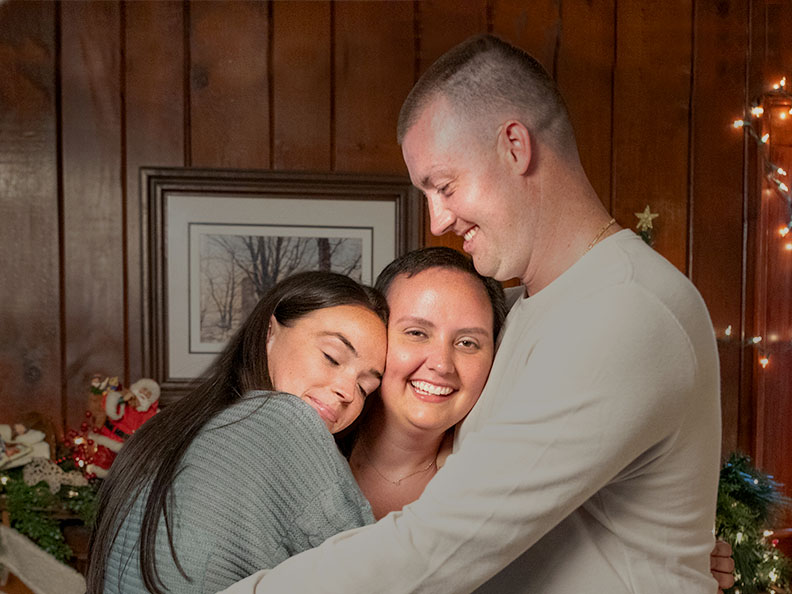Your gift is 100% tax deductible
Chemotherapy for Cervical Cancer
Chemotherapy (chemo) drugs given intravenously (into a vein) or by mouth are called systemic chemotherapy. The drugs enter the bloodstream and reach throughout the body, making this treatment useful for cancers that have spread.
Chemo drugs commonly used to treat cervical cancer
Treatment choices are made based on each person's needs. Drugs that have been used include:
- Cisplatin
- Carboplatin
- Bevacizumab (Avastin)
- Paclitaxel (Taxol®)
- Topotecan (Hycamtin)
- Docetaxel (Taxotere)
- Fluorouracil (5-FU)
These drugs can be given:
- At the same time as radiation (for cancer that has not spread to other parts of the body)
- Alone (if cancer has already spread to other parts of the body)
Chemo side effects
Chemo works by attacking rapidly dividing cells. This is helpful in killing cancer cells, but can also affect normal cells, leading to some side effects. Side effects of chemo depend on the type of drugs, the amount taken, and the length of time you are treated.
Common side effects of chemotherapy include:
- Hair loss
- Mouth sores
- Loss of appetite
- Diarrhea
- Nausea and vomiting
- Changes in the menstrual cycle, premature menopause, and infertility (inability to become pregnant)
Chemo can also affect the blood-forming cells of the bone marrow, lowering the blood cell counts. This can cause:
- Increased chance of infections (from low white blood cells)
- Easy bruising or bleeding (from low blood platelets)
- Fatigue (caused by low red blood cells)
Most side effects are temporary and stop when the treatment is over, but some can be long-lasting or even permanent.
Long-term side effects of chemotherapy
Menstrual changes: If your uterus was not removed as part of treatment, changes in menstrual periods are a common side effect of chemo. But even if your periods stop while you are getting chemo, you might still be able to get pregnant. Getting pregnant while receiving chemo is not safe, as it might lead to birth defects and interfere with treatment. This is why it’s important to discuss birth control options with your doctor if you are pre-menopausal and sexually active before treatment. Patients who have finished treatment (like chemo) can often go on to have children, but it's important to talk to your doctor about when it is safe to do so.
Premature menopause (not having any more menstrual periods) and infertility (not being able to become pregnant) may occur and may be permanent. Some chemo drugs are more likely to cause this than others. The older a woman is when she gets chemo, the more likely it is that she will become infertile or go through menopause as a result. If this happens, there is an increased risk of bone loss and osteoporosis. Medicines that can treat or help prevent problems with bone loss are available.
Neuropathy: Some drugs used to treat cervical cancer, including paclitaxel and cisplatin, can damage nerves outside of the brain and spinal cord. This can sometimes lead to symptoms like numbness, pain, burning or tingling sensations, sensitivity to cold or heat, or weakness, mainly in the hands and feet. This is called peripheral neuropathy. In most cases it gets better or even goes away once treatment stops, but it can last a long time in some people.
Nephrotoxicity: Cisplatin, the main chemo drug used to treat cervical cancer, can damage the kidneys (called nephrotoxicity). The damage is often preventable and reversible, but sometimes it can be long-lasting. Often, there are no symptoms, but the damage can be seen on bloodwork done routinely while chemo is given. If the kidneys are damaged, the cisplatin is usually stopped, and carboplatin may be used instead.
Other side effects are also possible. Ask your cancer care team about the chemo you will receive and what side effects you can expect.
More information about chemotherapy
For more general information about how chemotherapy is used to treat cancer, see Chemotherapy.
To learn about some of the side effects listed here and how to manage them, see Managing Cancer-related Side Effects.
- Written by
- References

Developed by the American Cancer Society medical and editorial content team with medical review and contribution by the American Society of Clinical Oncology (ASCO).
Eifel P, Klopp AH, Berek JS, Konstantinopoulos A. Chapter 74: Cancer of the Cervix, Vagina, and Vulva. In: DeVita VT, Lawrence TS, Rosenberg SA, eds. DeVita, Hellman, and Rosenberg’s Cancer: Principles and Practice of Oncology. 11th ed. Philadelphia, Pa: Lippincott Williams & Wilkins; 2019.
Jhungran A, Russell AH, Seiden MV, Duska LR, Goodman A, Lee S, et al. Chapter 84: Cancers of the Cervix, Vulva, and Vagina. In: Niederhuber JE, Armitage JO, Doroshow JH, Kastan MB, Tepper JE, eds. Abeloff’s Clinical Oncology. 6th ed. Philadelphia, Pa: Elsevier; 2020.
Liontos M, Kyriazoglou A, Dimitriadis I, Dimopoulos MA, Bamias A. Systemic therapy in cervical cancer: 30 years in review. Crit Rev Oncol Hematol. 2019 May;137:9-17. doi: 10.1016/j.critrevonc.2019.02.009. Epub 2019 Feb 28. PMID: 31014518.
National Comprehensive Cancer Network. NCCN Clinical Practice Guidelines in Oncology: Cervical Cancer. v.4.2025. Accessed at https://www.nccn.org/professionals/physician_gls/pdf/cervical.pdf on May 1, 2025.
Last Revised: July 1, 2025
American Cancer Society medical information is copyrighted material. For reprint requests, please see our Content Usage Policy.
American Cancer Society Emails
Sign up to stay up-to-date with news, valuable information, and ways to get involved with the American Cancer Society.



